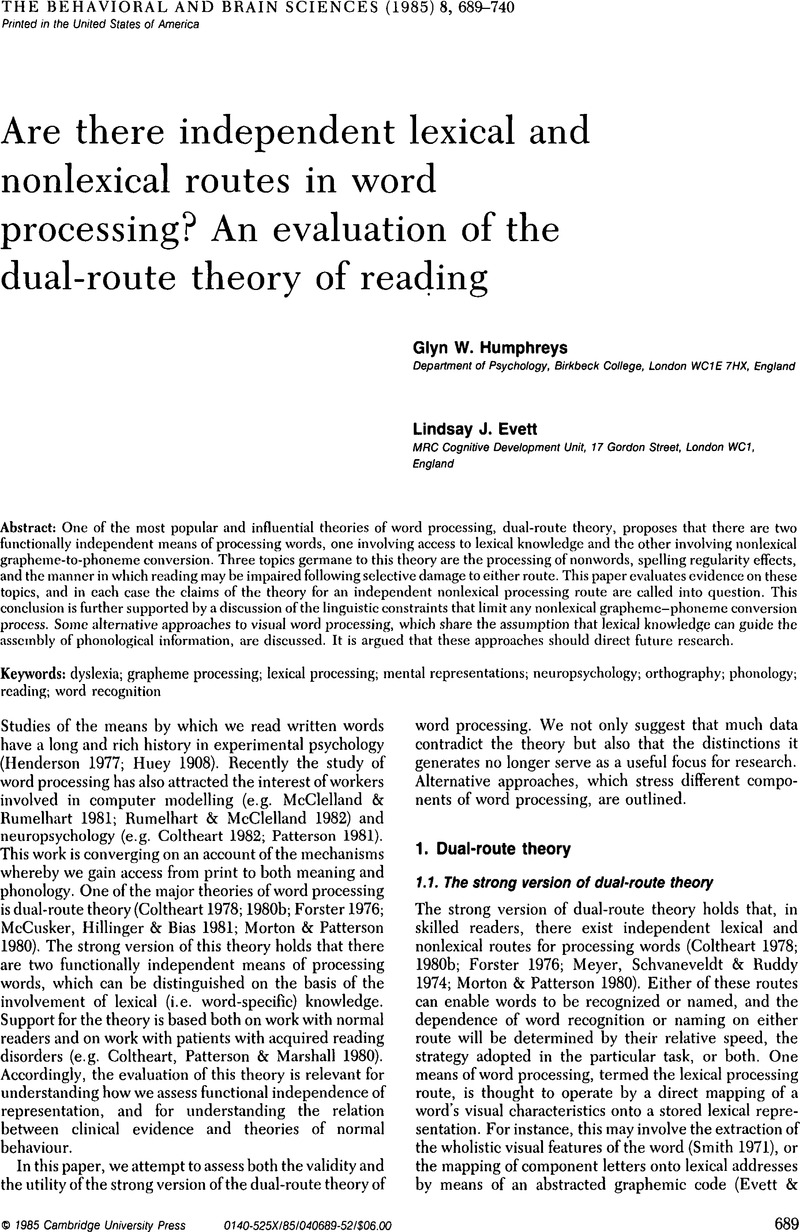Crossref Citations
This article has been cited by the following publications. This list is generated based on data provided by Crossref.
Peereman, Ronald
1991.
Phonological assembly in reading: Lexical contribution leads to violation of graphophonological rules.
Memory & Cognition,
Vol. 19,
Issue. 6,
p.
568.
Glez, Juan E. Jiménez
and
López, Mercedes Rodrigo
1994.
Is It True That the Differences in Reading Performance Between Students With and Without LD Cannot Be Explained by IQ?.
Journal of Learning Disabilities,
Vol. 27,
Issue. 3,
p.
155.
Defior, Sylvia
Justicia, Fernando
and
Martos, Francisco J.
1996.
The influence of lexical and sublexical variables in normal and poor Spanish readers.
Reading and Writing,
Vol. 8,
Issue. 6,
p.
487.
Defior, Sylvia
Justicia, Fernando
and
Martos, Francisco
1998.
Desarrollo del reconocimiento de palabras en lectores normales y retrasados en función de diferentes variables lingüísticas.
Infancia y Aprendizaje,
Vol. 21,
Issue. 83,
p.
59.
Huntsman, Laree A.
1998.
Testing the direct-access model: GOD does not prime DOG.
Perception & Psychophysics,
Vol. 60,
Issue. 7,
p.
1128.
González, M.J.
and
Romero, J.F.
1999.
¿Influye el desarrollo de la producción fonológica en el aprendizaje de la lectura?.
Revista de Logopedia, Foniatría y Audiología,
Vol. 19,
Issue. 2,
p.
61.
Jiménez, Juan E.
Rodrigo, Mercedes
del Rosario Ortiz, María
and
Guzmán, Remedios
1999.
Procedimientos de evaluación e intervención en el aprendizaje de la lectura y sus dificultades desde una perspectiva cognitive.
Infancia y Aprendizaje,
Vol. 22,
Issue. 88,
p.
107.
Van Orden, Guy C.
Pennington, Bruce F.
and
Stone, Gregory O.
2001.
What do double dissociations prove?.
Cognitive Science,
Vol. 25,
Issue. 1,
p.
111.
Taibo, María Luisa Gómez
Iglesias, Pilar Vieiro
Raposo, María del Salvador González
and
Méndez, María Sotillo
2010.
An Exploratory Study of Phonological Awareness and Working Memory Differences and Literacy Performance of People that Use AAC.
The Spanish journal of psychology,
Vol. 13,
Issue. 2,
p.
538.
Nikki Arrington, C.
Kulesz, Paulina A.
Juranek, Jenifer
Cirino, Paul T.
and
Fletcher, Jack M.
2017.
White matter microstructure integrity in relation to reading proficiency☆.
Brain and Language,
Vol. 174,
Issue. ,
p.
103.
Faria, Ana Lúcia
Pinho, Maria Salomé
and
Bermúdez i Badia, Sergi
2018.
Capturing Expert Knowledge for the Personalization of Cognitive Rehabilitation: Study Combining Computational Modeling and a Participatory Design Strategy.
JMIR Rehabilitation and Assistive Technologies,
Vol. 5,
Issue. 2,
p.
e10714.
Cheng, Mengping
Everatt, John
Arrow, Alison
and
Denston, Amanda
2023.
Chinese heritage children learning to read characters: The effects of group reading and frequency of character exposure.
Language Teaching Research,
Moore, Karol A.
Lai, Jialin
Quinonez-Beltran, Juan F.
Wijekumar, Kausalai
and
Joshi, R. Malatesha
2023.
A cross-orthographic view of dyslexia identification.
Journal of Cultural Cognitive Science,
Vol. 7,
Issue. 2,
p.
197.
Zhang, Nan
Wu, Zhiyi
and
Wang, Min
2025.
Cross-language phonological activation in bilingual visual word recognition: A meta-analysis.
Psychonomic Bulletin & Review,
Vol. 32,
Issue. 5,
p.
2059.


